In recent years, more and more plant-based alternatives to animal-derived foods have made the transition to a vegan lifestyle easier – tofu to substitute meat, almond milk instead of dairy milk, and more.
If you’re looking to eat cruelty-free baked goods, there’s one ingredient that no proper substitute has been found for that works just as good. That ingredient is yeast. Nothing quite beats the rise that yeast-leavened bread has. But, before indulging in these beautiful carbs, we must first make sure; is yeast vegan?
What Is Yeast?
Yeast is a single-cell fungus that needs a supply of food and moisture to survive. In fact, yeast cells obtain energy through digesting food.
The way yeast works in baking, as well as in the making of beer and wine, is through fermentation. Yeast is used as a leavening agent, which produces carbon dioxide gas, fermenting the sugars in the flour and causing the dough to rise.
Thus, yeast is undoubtedly alive. But so are plants, and the fact that they’re alive doesn’t mean that they’re not vegan to consume.
Why Is Yeast Vegan?
Although yeast is a fungus, it isn’t considered a “living organism” with thoughts and feelings. But is that enough to deem it safe to consume for vegans? Turns out, yes!
Yeast doesn’t suffer in any way or shape when used in our recipes. That’s because yeast doesn’t have brains that could receive pain signals, nor does it even have a central nervous system.
All in all, yeast is vegan and is safe to be consumed without weighing on your conscience. It was even deemed safe to eat by PETA, the animal rights organisation.
Still, some vegans prefer not to ingest it. Since ethics change from one person to another, and there’s no specific list of rules to follow when adopting a vegan lifestyle, it all comes down to each individual’s beliefs about how safe they think something is to include in their diet.
Types of Yeast
There are two main types of yeast available; baker’s yeast, which is the leavening agent that gives bread that beautiful airy nature that we all love, and brewer’s yeast, used mainly in beer making.
Baker’s Yeast
There are three main types of baker’s yeast used in the fermentation process of baking bread and pastries such as croissants, doughnuts and hot cross buns. Each of these types differs in properties, method of usage and even taste.
Active Dry Yeast
This type of yeast is best used for recipes with a longer proofing time as it has a longer fermentation process. To use it, you first need to dissolve it in warm water that’s no hotter than 43°C, as that’ll kill the yeast. The most optimum temperature is 38°C.
After about ten minutes, your yeast mixture will increase in size and become foamy. Thus you could go on adding the rest of your ingredients. If your yeast mixture’s size doesn’t increase after more than 20 minutes, then it’s most likely dead and not usable anymore.
To prevent this from happening, make sure to store active dry yeast away from warm areas, preferably keep sealed packets and jars in the freezer. Once they’re opened, you could store them in an airtight bag in the fridge.
Instant Yeast
Instant yeast is quite similar to active dry yeast except for two main differences; the first is the granules’ size – instant yeast has smaller granules than active yeast. The second difference is that it doesn’t need to be dissolved in warm water before use.
This makes instant yeast the most reliable and active type of baker’s yeast available. When using it, you can add it directly to your recipe without blooming it. That’s mainly due to the finer granules of instant yeast, as they allow for a faster rehydration process.
Instant yeast is also very shelf-stable and safe to store in a dry, airtight container or the freezer. It’s also available as rapid rising, which uses special enzymes that make the dough rise faster and could let you skip over an entire rising time.
Fresh Yeast
Unlike the previous types, fresh yeast isn’t dehydrated. It’s also the least shelf-stable type, as it has a high moisture content of about 70%, so it must be used within a couple of weeks of purchase and kept in cool, dry places (preferably a refrigerator).
Fresh yeast comes in big compressed blocks or small, square cakes; hence, it’s also called “compressed yeast” or “cake yeast”.
Before each use, you should proof fresh yeast to ensure that it’s still safe to use. To proof it, add it to warm water with a tiny amount of sugar dissolved in it. About five to ten minutes later, if the mixture begins to foam, you’re good to go.
The reason why fresh yeast should be proofed is that it’s highly perishable. If it’s not kept in ideal conditions, it’ll begin to mould and no longer be safe for use. Some bakers prefer to use fresh yeast for sweeter recipes, too, as it gives a lively scent.
Brewer’s Yeast
In addition to beer making, brewer’s yeast is used as a nutritional supplement for its richness in chromium and naturally occurring proteins. Plus, it’s a source of several B vitamins.
There are two types of yeast used in beer making; one for brewing ale and one that makes lager.
Top-Fermenting Yeast
Top-fermenting yeast is used to ferment ale. The yeast is applied to the top of the wort, creating a rich, thick head. It should be used at a warm temperature between 10 and 25°C.
Top-fermenting yeast tends to be more flavourful and is the oldest fermenting method.
Bottom-Fermenting Yeast
On the other hand, bottom-fermenting yeast is used to ferment lager. Unlike top-fermenting yeast, this one should be used at a cooler temperature between 7 and 15°C.
Bottom-fermenting yeast applied to the bottom of the wort and takes longer to grow than top-fermented yeast, so it could take weeks to develop lager. This results in beer with a less striking flavour and not that much foam.
Cooking Yeast
Other than baker’s yeast and brewer’s yeast, certain types of yeast are used in cooking to add nutritional value and extra flavour to food.
Nutritional Yeast
Nutritional yeast is often used as a source of B vitamins and minerals in cooking recipes after a deactivation process. This process involves using heat to kill off live yeast cultures, making the yeast suitable to consume in large quantities.
Nutritional yeast comes in a powder or flake form that provides a cheesy-like, nutty flavour to food and can be used as a topping to take your vegan recipes up a notch.
Yeast Extract
Yeast extract differs from nutritional yeast in that it’s more concentrated and comes in the form of a paste. It offers a different flavour from that of nutritional yeast that can best be described as a pleasant, savoury taste. It’s often given the name “Umami” flavour.
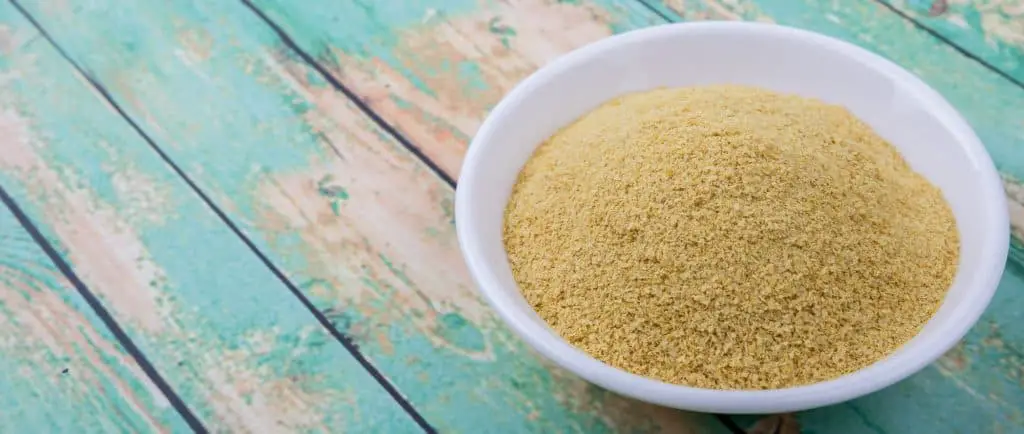
Can I Bake Using Brewer’s Yeast?
While it’s not the best option for flavour, brewer’s yeast can absolutely be used to bake as it’ll still give your baked goods the rise that yeast is supposed to provide. The most significant difference would be the bitter flavour that the brewer’s yeast has, so unless you have a problem with that, then definitely use whichever yeast you prefer.
Can I Use Nutritional Yeast to Bake?
To use a certain type of yeast for baking, it needs to be a good leavening agent to inflate your dough. Unfortunately, this isn’t achievable with nutritional yeast, as it undergoes a deactivation process where live yeast cultures are killed off by heat.
Without live yeast, fermentation isn’t possible. Thus you can’t bake using this type of yeast. But that’s a good thing! In fact, this makes it safer to consume as a cooking yeast, as live yeast is extremely harmful to eat and could cause intestinal gas and rob your body of essential nutrients such as thiamine.
Best Nutritional Yeast Brands for Vegans
1. Red Star
Red Star is one of the most well-known and widely available nutritional yeast brands. It’s rich in nutrients with a full list of B-vitamins – one tablespoon contains 133% of the recommended dietary allowance for vitamin B12. Rest assured that your product is 100% safe as no lead was detected in its samples.
- Red Star Savory Nutritional Yeast Flakes
Prices pulled from the Amazon Product Advertising API on:
Product prices and availability are accurate as of the date/time indicated and are subject to change. Any price and availability information displayed on [relevant Amazon Site(s), as applicable] at the time of purchase will apply to the purchase of this product.
2. Bragg
Bragg is another commonly available brand of nutritional yeast that doesn’t contain any detectable lead. These flakes are low-calorie, low-sodium, and fortified with B-vitamins such as B1, B2, B6, B12, as well as folic acid. They’re also a good vegan source of protein. Enjoy these flakes as a nutritious seasoning to your dips and salads or even as a substitute for parmesan cheese.
- Provides great-taste and nutrition when added to a wide variety of foods and recipes
Prices pulled from the Amazon Product Advertising API on:
Product prices and availability are accurate as of the date/time indicated and are subject to change. Any price and availability information displayed on [relevant Amazon Site(s), as applicable] at the time of purchase will apply to the purchase of this product.
3. Frontier Co-Op Mini Flakes
These mini flakes are smaller in size than their competitors but pack a balanced mixture of a nutty and cheesy flavour in a rich, creamy texture. They’re processed in Estonia in a sustainable environment without toxins or pesticides.
They’re also dairy-free and kosher certified, so anyone who follows a kosher diet will come to appreciate them. One downside to these flakes is that they had detectable lead levels, so pregnant women are advised to stay away from them.
- NUTRITIONAL YEAST FLAKES - Frontier Co-op Large Nutritional Yeast Flakes are a non-dairy cheese substitute and seasoning derived from a mixture of cane and beet molasses.
Prices pulled from the Amazon Product Advertising API on:
Product prices and availability are accurate as of the date/time indicated and are subject to change. Any price and availability information displayed on [relevant Amazon Site(s), as applicable] at the time of purchase will apply to the purchase of this product.
How to Choose Good Vegan Nutritional Yeast
There are a few factors to take into account when deciding which type of nutritional yeast is your best fit. Below are some key things to consider.
Fortified vs Non-Fortified
For those who have a completely natural approach when it comes to their diet or already have a good supply of B-vitamins, then non-fortified yeast has just what they’re looking for.
On the other hand, fortified yeast can be especially beneficial for vegans, as they’re a good source of vitamins, specifically B12, which is most commonly found in meats. So, it’s harder for vegans to get a good supply of it.
Dietary Needs
Having an extra boost of nutrients is probably why you’re likely to consider taking nutritional yeast, so it goes without saying that your dietary needs play a big role in the type of yeast that you’ll take.
Many options specifically cater to your needs, whether they’re a good supply of protein, some extra vitamins, or gut-serving fibres. Keep those things in mind when navigating the supermarket aisles.
Price
Although some affordable brands of nutritional yeast are available, there are still a few measures that you could take to save a few extra quids.
You could calculate your daily intake and measure that against the container’s total weight; thus, you’ll be able to know whether or not you’re getting your money’s worth. Buying in bulk online is also a cheaper option.
Final Words
All in all, yeast can do so much more than just leavening dough. It has its fair share of nutrients that are fortunately safe enough for vegans to consume.
As veganism is more of a lifestyle than a diet, it’s essential to make sure that every aspect of your life helps maintain the sustainable, cruelty-free life you’re trying to lead, even if that aspect is as tiny as a single-cell organism.



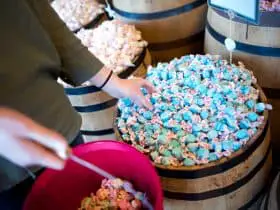

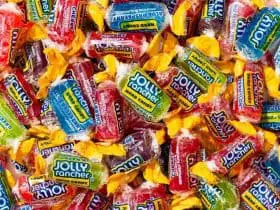
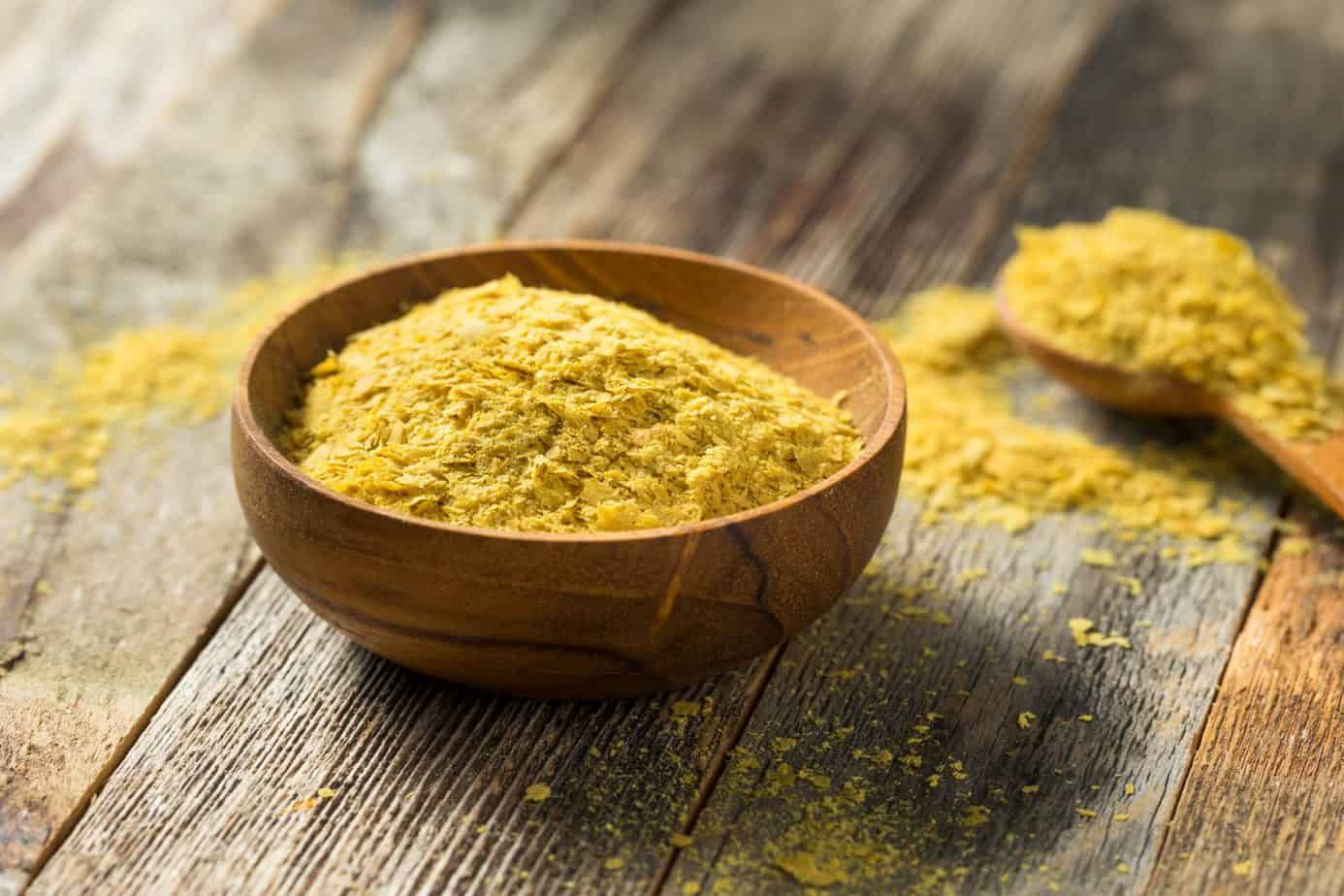


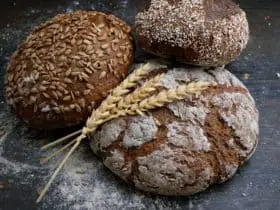


Leave a Reply